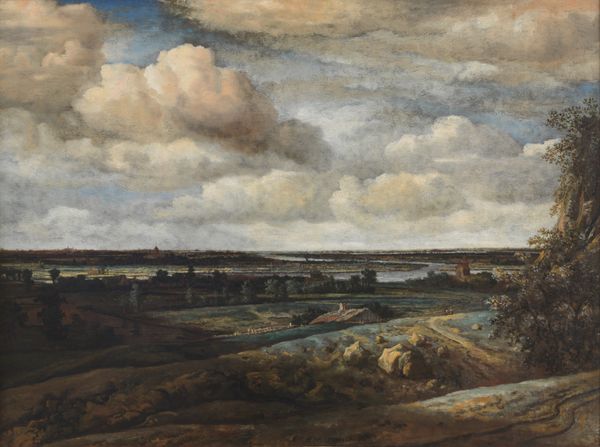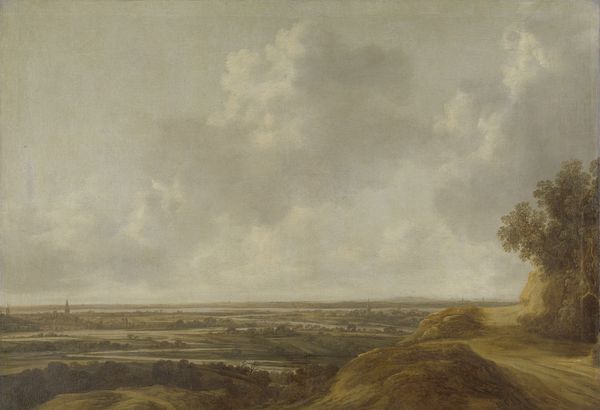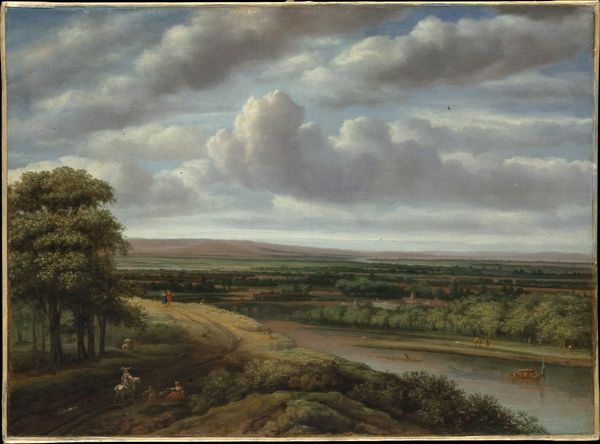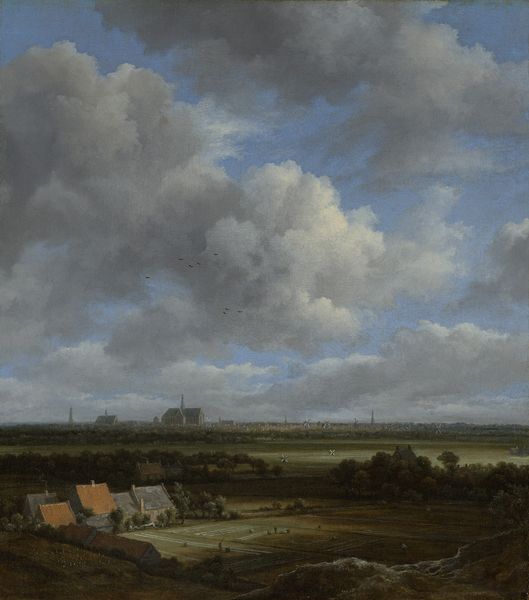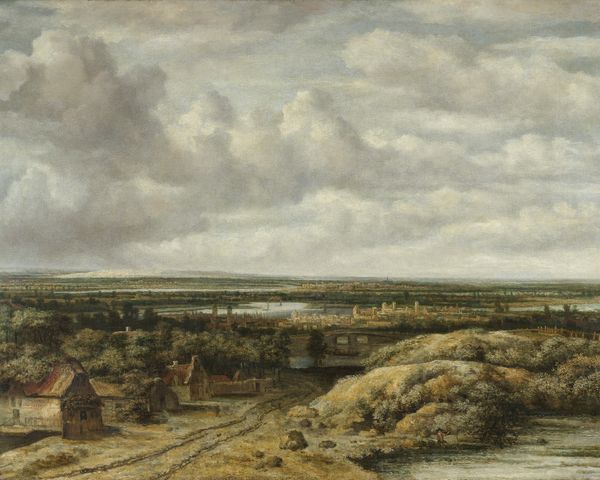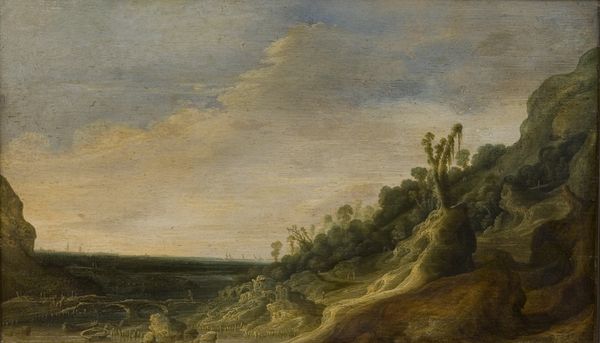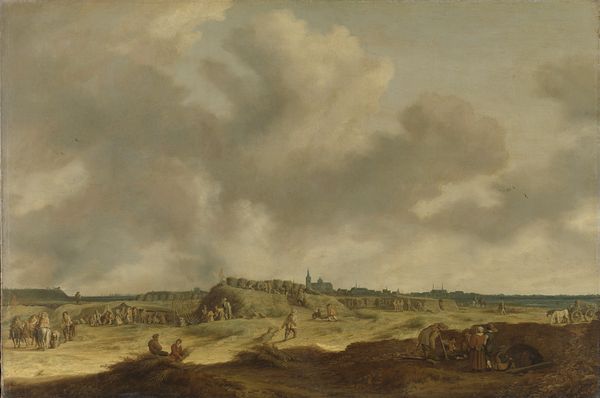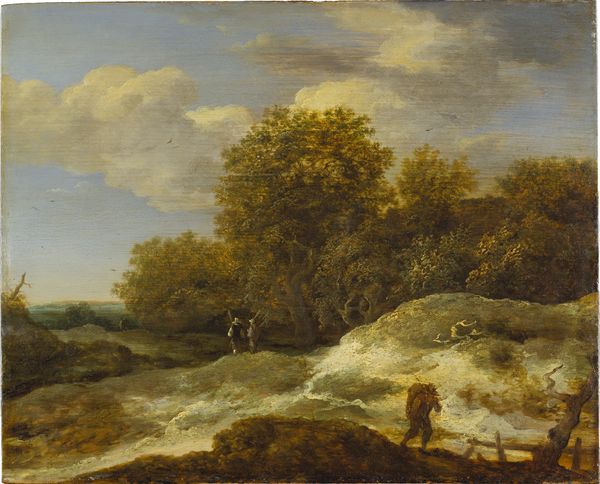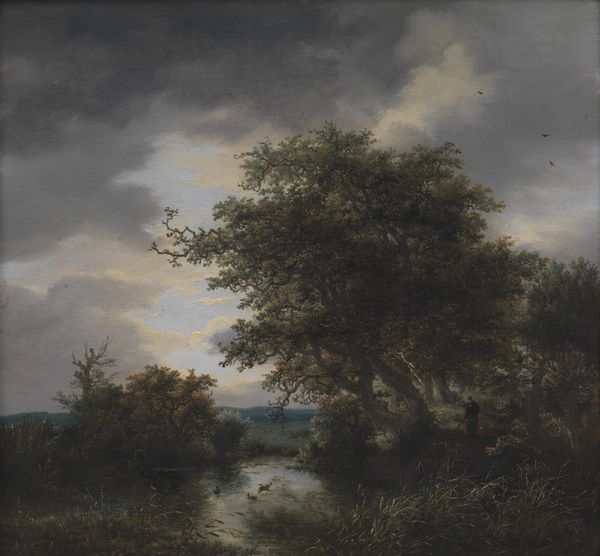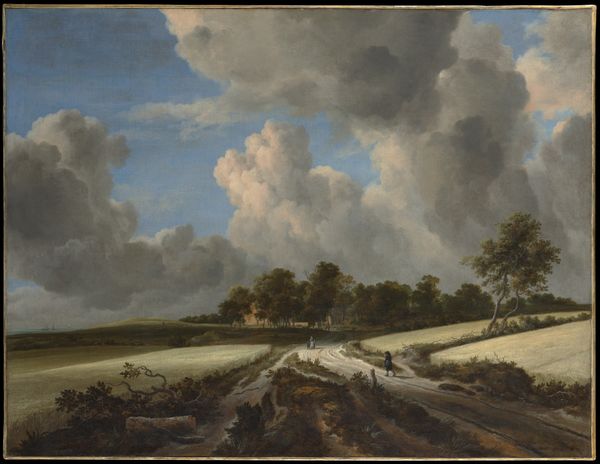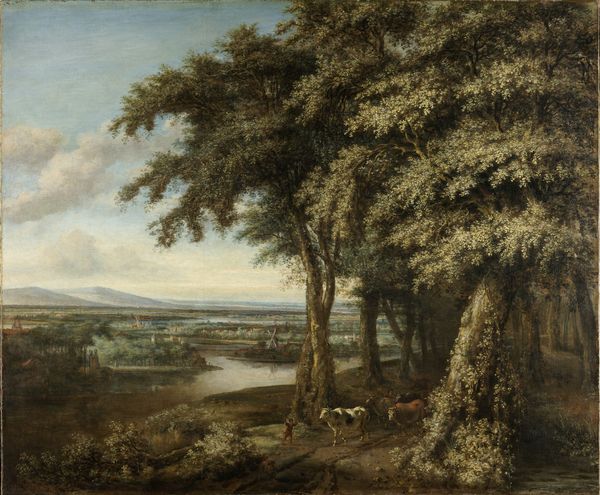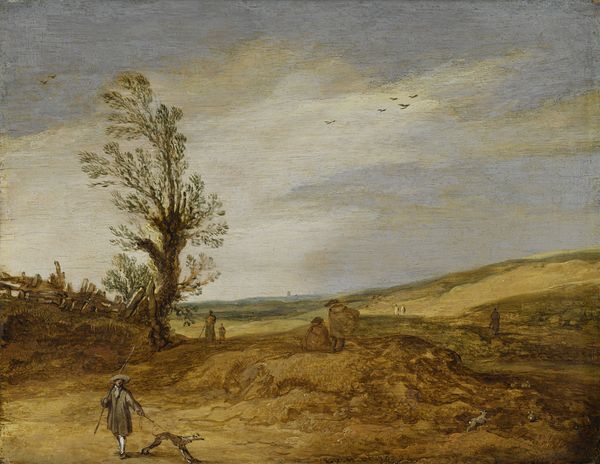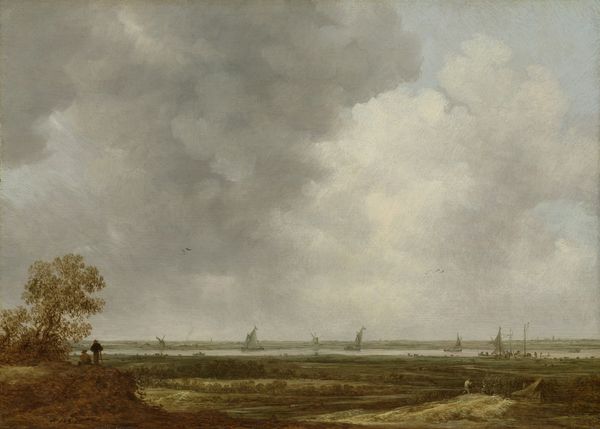
painting, oil-paint
#
baroque
#
dutch-golden-age
#
painting
#
oil-paint
#
landscape
#
river
#
oil painting
#
genre-painting
Dimensions: height 92.5 cm, width 112 cm, depth 9 cm
Copyright: Rijks Museum: Open Domain
Editor: This is Philips Koninck's "River Landscape" from 1676, made using oil paint. The scope is grand, it looks very Dutch Golden Age, doesn’t it? It kind of romanticizes everyday life, and nature. What's your take on this painting? Curator: As a materialist, my focus is on the oil paint itself, its availability, production, and how that impacts the artistic choices. Oil paint allowed for incredible detail and luminosity. Consider the layering of glazes - that painstaking process reflected the economic investment of the patron as well as the skills Koninck brought as a craftsman and businessman. How does his embrace of the "high art" genre of landscape impact the perceived labor that went into its making? Editor: So, are you saying that Koninck's artistic choices weren’t purely aesthetic, but were influenced by market forces and available materials? Curator: Precisely. The demand for landscape paintings reflected the wealth of the Dutch Republic. Consider, also, the pigments. Where did they come from? How were they processed? Some colors were more expensive and labor-intensive to produce, think of lapis lazuli used to get blues, directly impacting the visual economy of the canvas. Did Koninck deliberately choose to represent the land that his merchant patrons profited from? How can we examine the connection between his landscape, trade, and material consumption? Editor: It’s amazing to think about art in relation to those things – the economics of making art! Curator: Exactly. It's about going beyond the beautiful vista, and diving into the gritty reality of art production during the Dutch Golden Age. Art making as labour itself! Editor: I've definitely learned something new about landscape painting. Curator: Indeed, we can begin to appreciate the art by studying not only its cultural resonance, but also the materiality, economic investment, and labour woven into each layer of brushstroke.
Comments
No comments
Be the first to comment and join the conversation on the ultimate creative platform.
